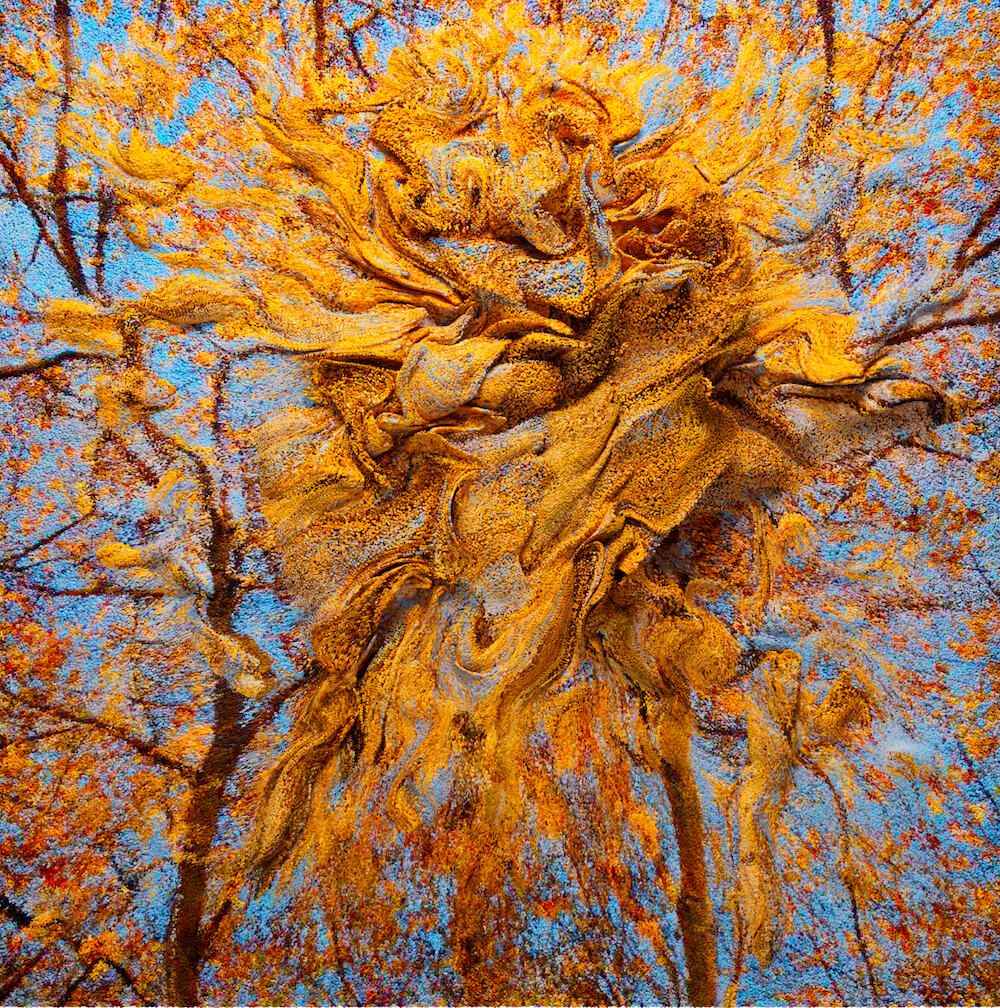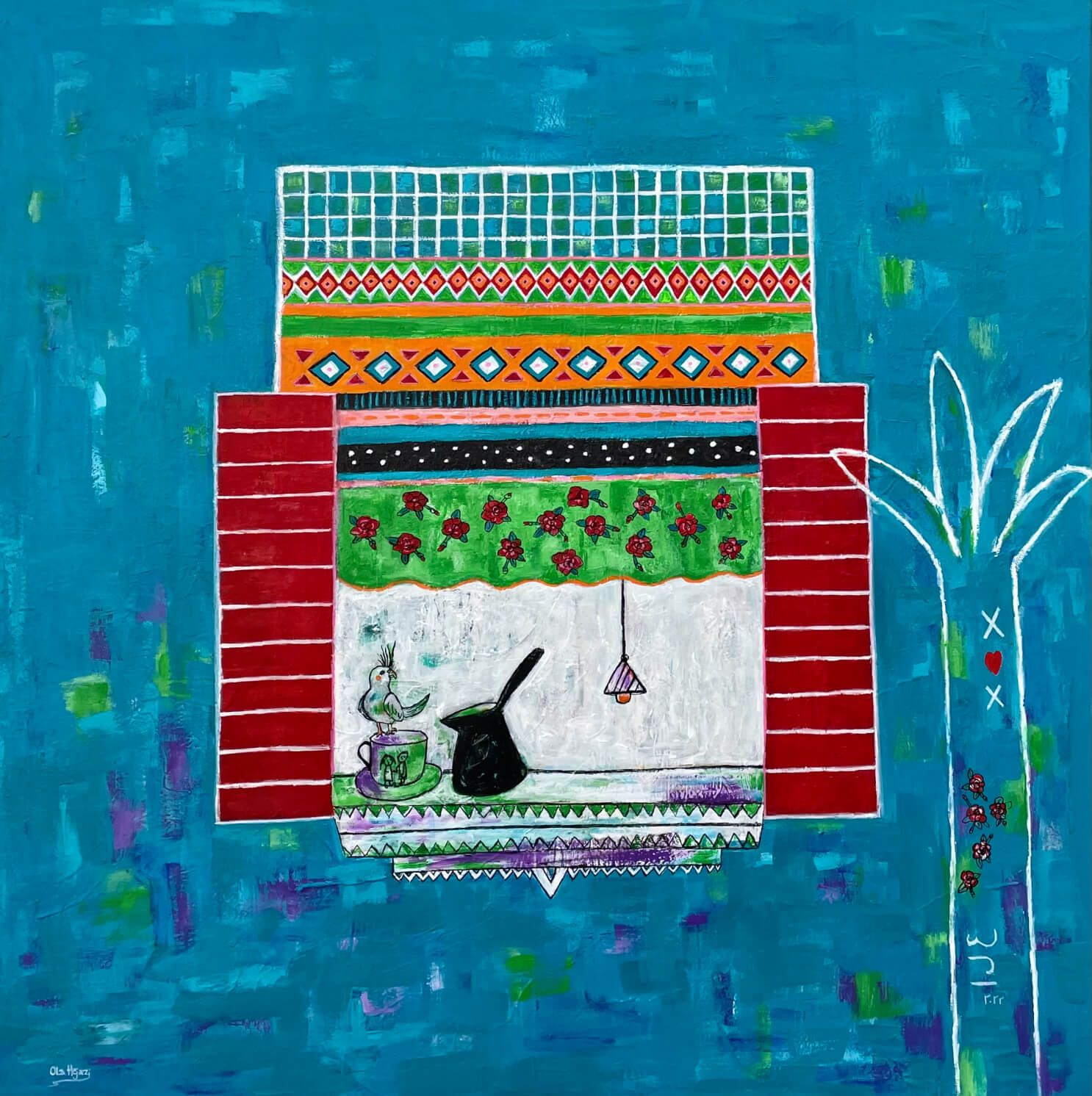Murals of Hope & Colors
Joel worked with community members of all ages at the Boulevard Houses in East New York to create this celebration of three generations of a family.
Courtesy of the artist.
With his brush and bright colored paint, Joel Bergner, also known as Joel Artista, creates large-scale powerful murals with the help of young people and communities worldwide to raise awareness about social issues. He has worked in more than 30 countries, coloring and painting murals in places such as Syrian refugee camps to create colorful sites for those who need them the most. His work strives to provide open spaces for disadvantaged young people in shelters and war camps to define their own narratives, build resilience, and express themselves.
Building on the healing power of art, these projects provide an outlet for children with trauma, allowing them to use other forms of expression when words fail to do the job.
Bergner is also the cofounder of the non-profit organization Artolution, which aims to support and train teams of local teaching artists to facilitate collaborative, educational arts programming in crisis-affected communities.
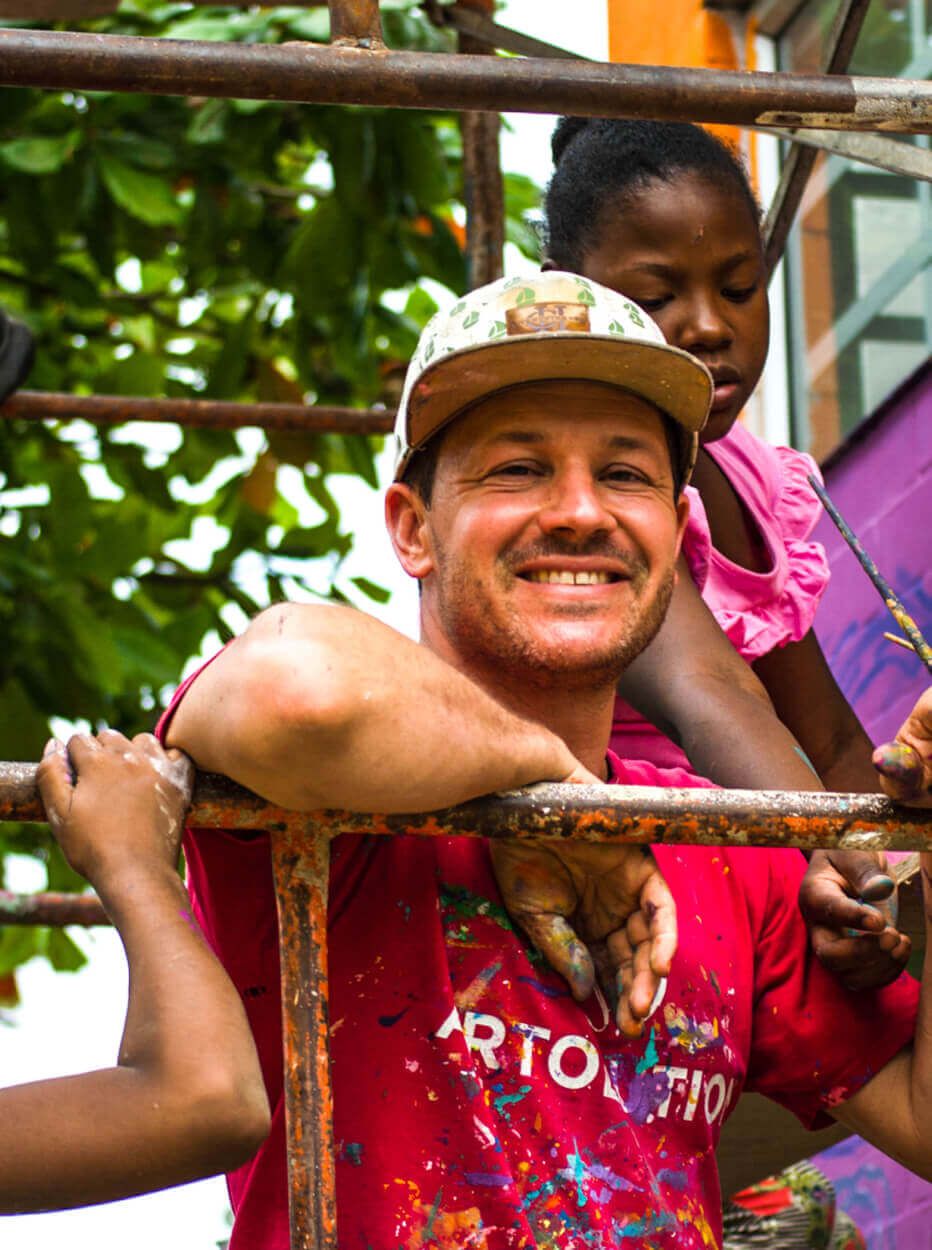
The artist Joel Bergner in Cali Colombia. courtesy of the artist.

Amman, Jordan. 2017. Art courtesy of the artist.
Q1. What does art mean to you?
For me, I’m most interested in collaborative art-making in which people of diverse backgrounds, often with little previous art experience, come together to tell their own stories and express themselves creatively together.
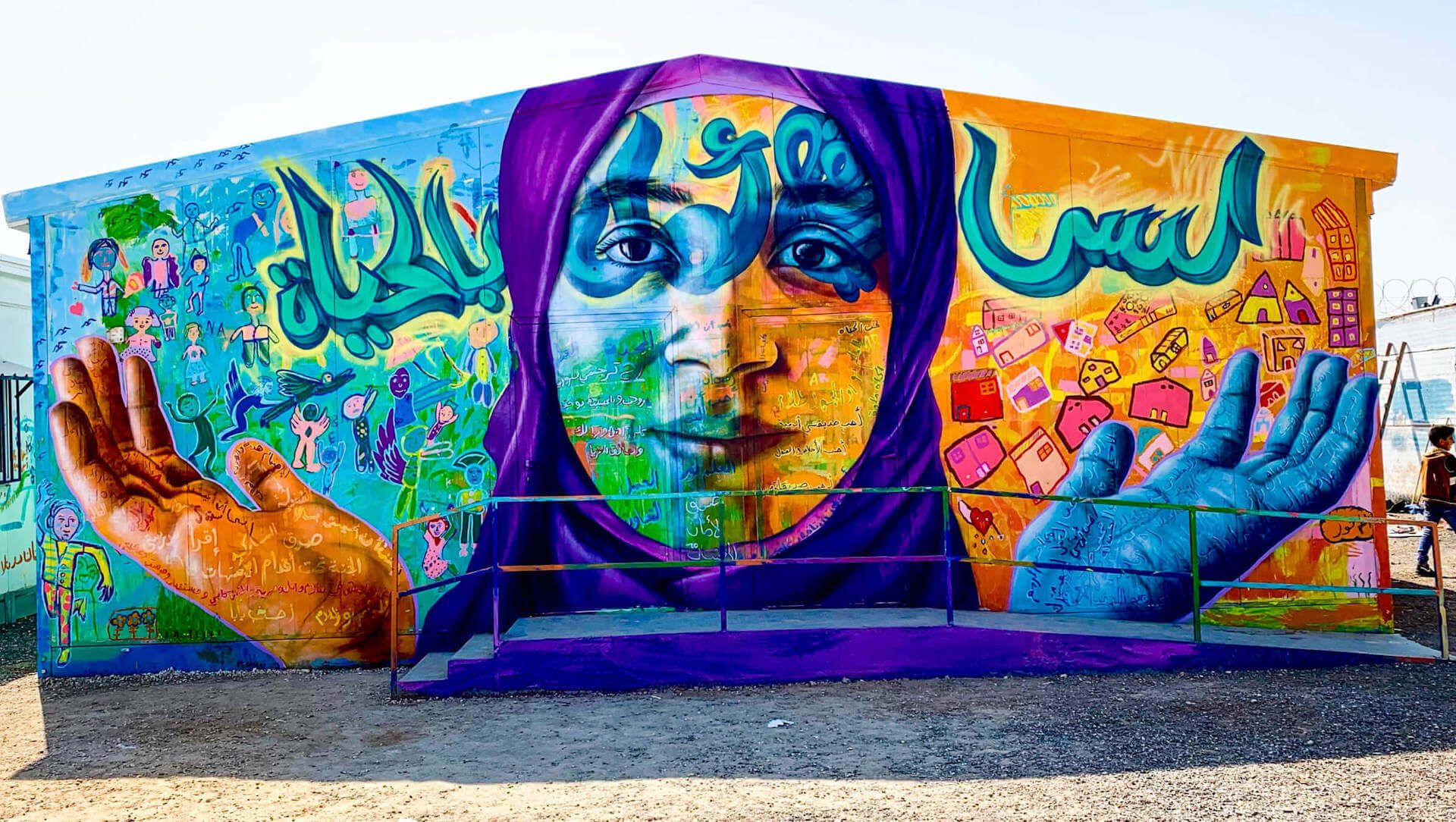
Azraq Syrian Refugee Camp, Jordan. 2019: “There is Still Hope in Life” collabo with Seddeq Ghoush, the Syrian Artolution artist team and local children. Partners: Artolution and UNICEF. Art courtesy of the artist.
Q2. Can you tell us about your background and how you started as an artist?
I’ve always been into art since I was little – always doodling and making little comics. When I was a teenager I got more seriously into art, and recognized its power to provide an outlet when I was feeling down or when life felt overwhelming. I soon became fascinated with public art forms, from muralism to graffiti to street art, and dedicated my practice to painting walls. When I began working as a counselor with youth who had experienced trauma, I realized that the arts had a powerful effect as a therapeutic tool, a way for them to focus their energies on being creative and engage positively with others. This led me to fuse my two passions– mural art and community work– and I began my journey creating public art with vulnerable communities.
Q3. Tell us about the community public art initiatives and how did it start?
I began by leading mural projects with kids in the US and then in Brazil, always collaborating with grassroots organizations. In Rio de Janeiro, I spent part of each year living with a family in a rough area called City of God (Cidade de Deus), where I experienced the tragic effects of a community abandoned by the state, where drug gangs control the area and violence is common, but also where there are incredible people who are warm, talented and full of creative energy.
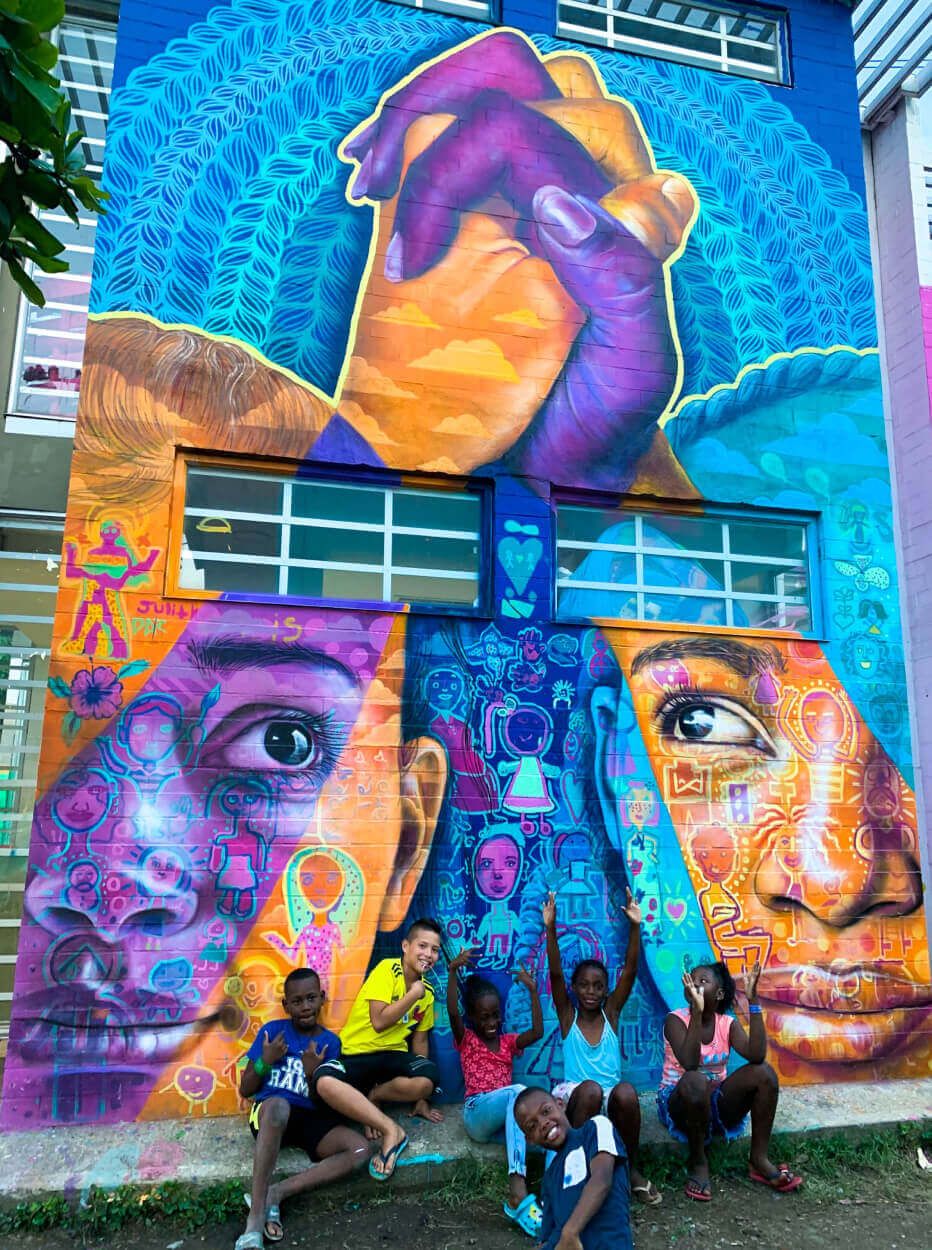
Cali, Colombia 2020: Joel collaborated with local youth and Cali artist Teca to create this mural of unity in the face of violent divisions and xenophobia in the community of Aguablanca. Partners: Artolution, Fundación Pintuco, Centro Cultural Colombo Americano
Courtesy of the artist.
I honed my craft, discovering exciting new ways to engage participants in collaborative painting, which provided a platform for them to explore the issues most important to their lives. After sharing these projects online,
I began getting invitations to lead similar projects in communities across the world, from Poland to Kenya to El Salvador to India– eventually working in 30 countries, including the Syrian refugee camps of Jordan, where the early inspiration to start an organization was sparked.

Za’atari Syrian Refugee Camp, Jordan. 2014.‘I Dream Of… ‘ Syrian kids painted their dreams for the future inside the shapes of this mural. Courtesy of the artist.
Q4. How can art be used help the marginalized community?
Community art-making allows participants to tell their own stories and shape their identity. This is very important to communities that are stigmatized by society, as often, people internalize these negative labels, especially youth. The arts – especially art created in public spaces – provides a platform for people to express who they are and what they aspire to.
Q5. How can art help in bringing people together etc.?
Collaborative art-making allows people to come together for a common mission. There are no winners and losers, no enemies; everyone is on the same team. They must work together to come up with their message that they wish to share with the world, and make group decisions about how best to execute their vision. Along this journey, participants must make arguments for their opinions, listen to others and make compromises, which are all important skills in life. We see that in these contexts, new friendships are always made, and people open up to one another and become vulnerable, which impacts their lives after the project is complete.
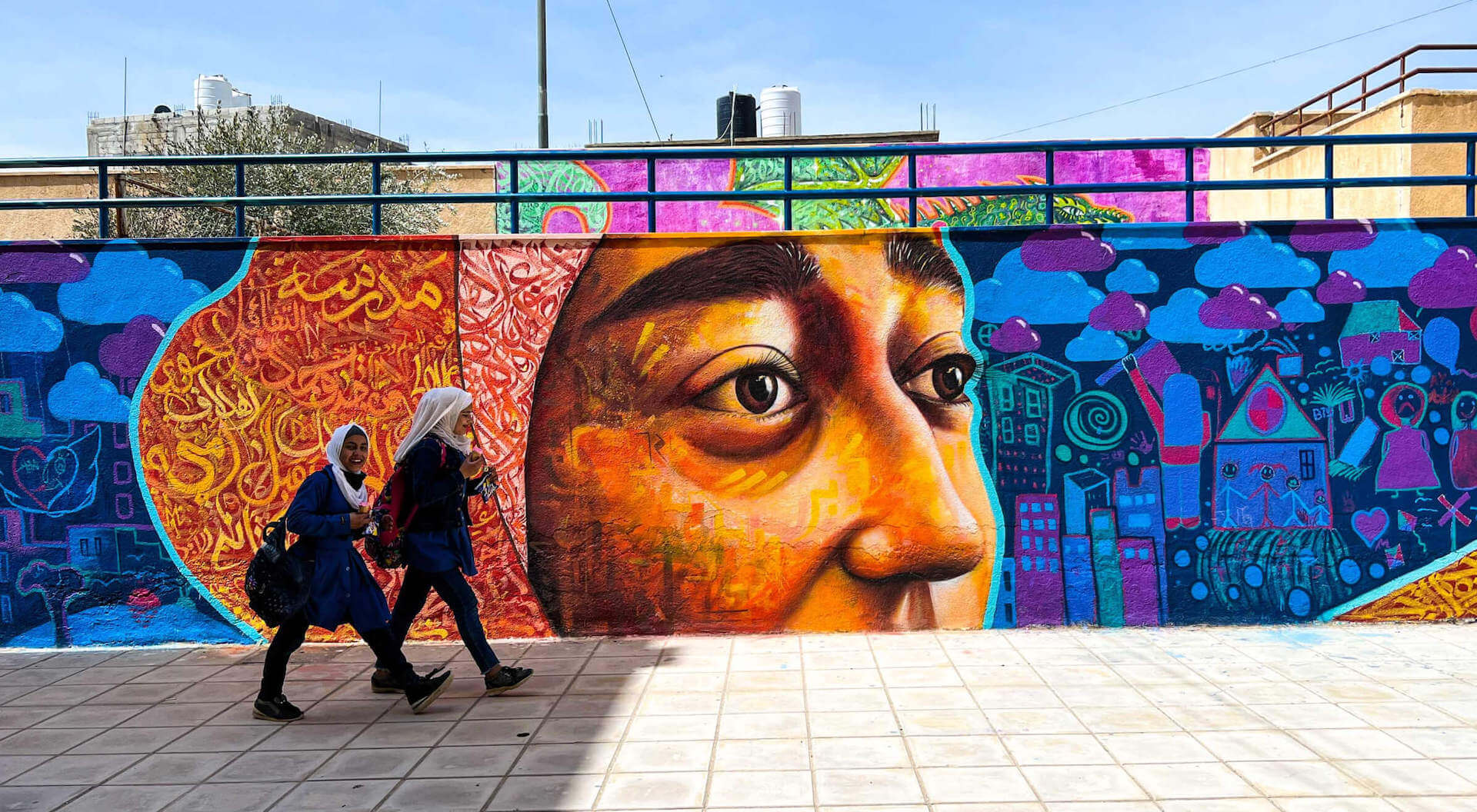
Dhlail, Jordan. Art courtesy of the artist.
Q6. What is one mural that you feel left the biggest impact on you or others?
There are many, it’s hard to choose. But one that always sticks with me is from back in 2013 in the Kibera Slum of Nairobi, Kenya, where I worked for two months with a group of children and artists. Through public art and performances, we advocated for a peaceful election process that year, as there were deep divisions in society that could have led to ethnic-based violence, as had happened previously. There was really a sense amongst the youth that we were working toward societal change through the artwork. Years later, one teen named Amos, who is now a young man, has started his own performance and arts academy in Kibera for children. I personally support his incredible program, which is serving dozens of kids and creating a real sense of community and purpose for them. I am most proud when I see children who participate, get inspired, and then grow up to make an impact on the next generation!
Q7. Tell us about the workshops and education that you provide to refugees in camps.
Our Artolution programming takes place year-round in the Azraq Syrian Refugee Camp in Jordan, a collaboration with UNICEF, where ten Syrian artists lead mural projects with children, guiding them through the process of designing and painting murals that express their dreams, culture and humanity to the world. We lead similar programs in the Rohingya camps in Bangladesh and the South Sudanese and Congolese camps in Uganda, all led by local refugee artists. These activities focus on social and emotional learning, in which young people strengthen their self-esteem, self-confidence and their decision-making skills. They learn to navigate group dynamics and form healthy relationships with others. These skills are vital for young people- especially those who have experienced trauma and displacement- to transition successfully into positive adults in the community.

The artist with Syrian refugee children. 2017. Art courtesy of the artist.
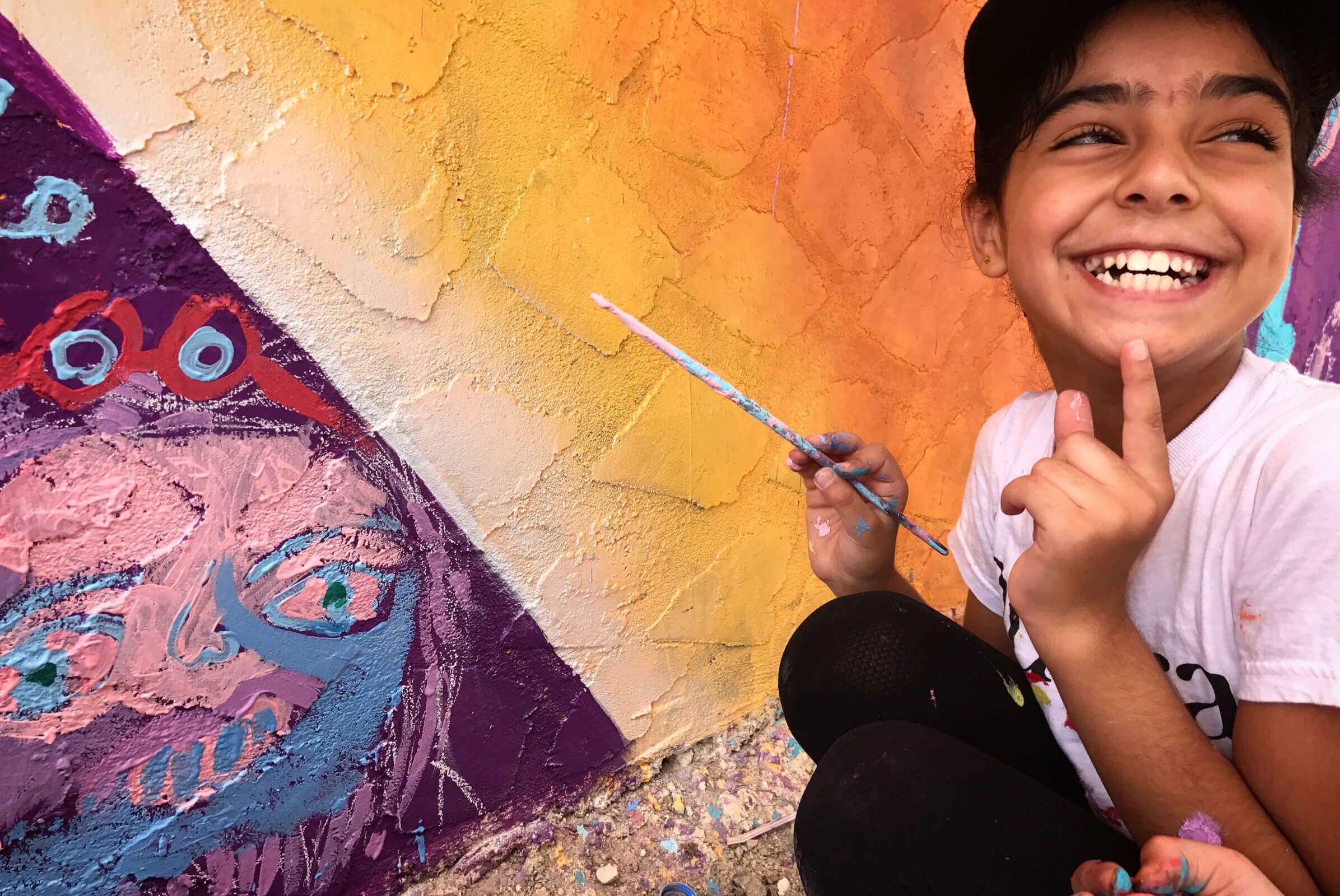
The artist with Syrian refugee children. 2017. Art courtesy of the artist.

The artist with Syrian refugee children. 2017. Art courtesy of the artist.
Q8. How can you maintain the impact of the projects?
Our Artolution programs are designed to be long-term and sustainable. Many of our refugee and marginalized artists, who lead our programs, have been with us for years, leading dozens of projects with hundreds of children in their communities. This long-term approach is vital to having a real impact, but it requires constant work to ensure that we have the funding to keep these programs sustainable.
Q9. Why do you tend to use bright colors in the murals?
I use bright colors because I find that it activates spaces and grabs people's attention, and because I'm working with children and youth, who naturally gravitate towards vibrant colors.
Q10. What artwork gives you peace and joy?
There’s one I love in London, painted with former street youth from various countries, that gives me joy because it features a youth with a giant megaphone, but the youth is made up of dozens of smaller people, showing that our voices are more powerful when we are united.
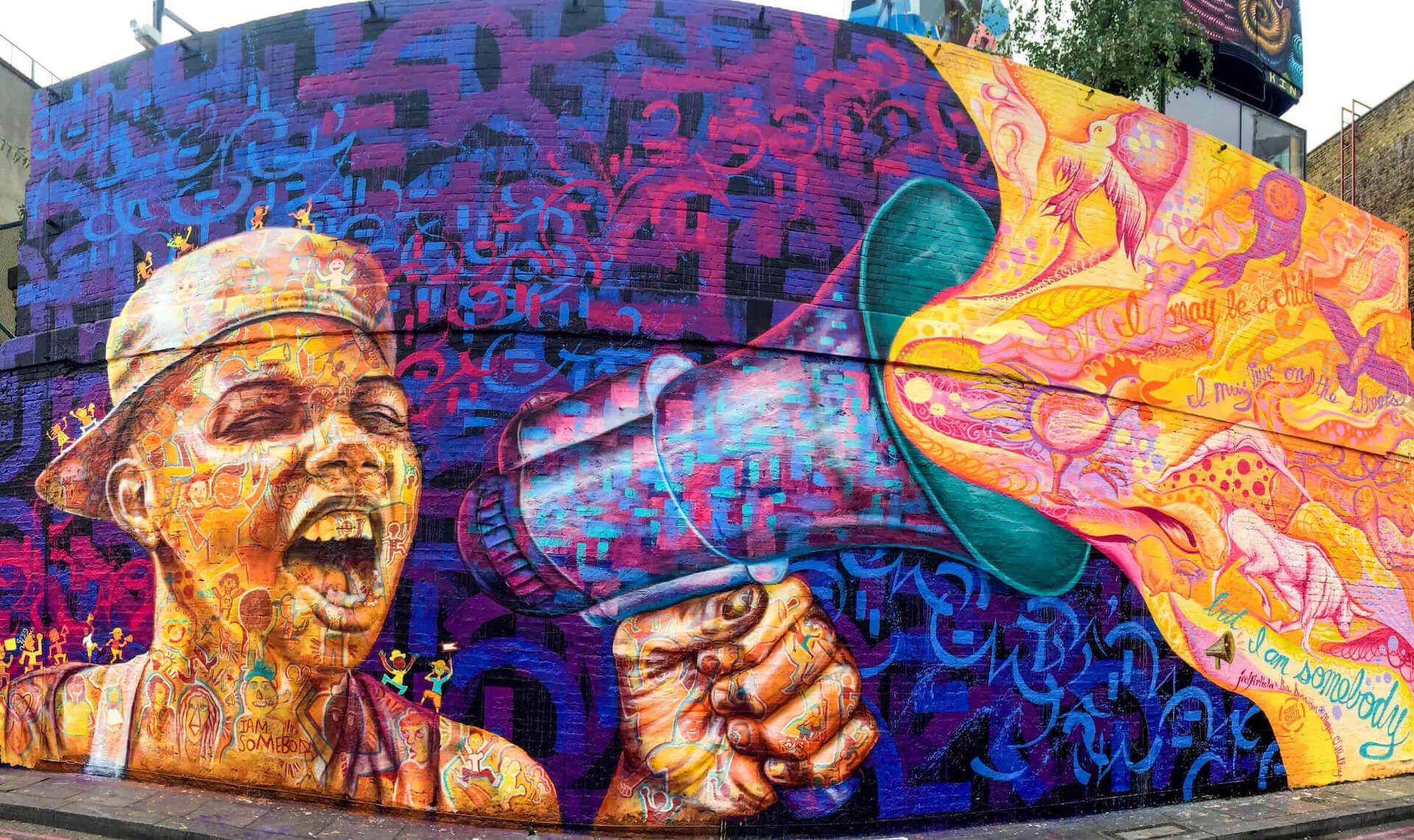
London, UK. 2015: This mural on the iconic Village Underground in Shoreditch was created for the Street Child Summit, an event that brought together former homeless youth from Brazil, Pakistan and Burundi. Joel collaborated with the youth and local artists Bec Dennison and Meghan O’Malley.
Partner: Street Child United. Courtesy of the artist.
Q11. What are the motifs or themes that you always feature in your art? And why?
I focus a lot on large portraits and hands, as this helps me to express a sense of common humanity and connection that people across the world, despite all our differences, can achieve if we are open to each other.
Q12. What do you hope to achieve through your work?
I hope to achieve a real change in the lives of the participants and artists who work with us, and to develop models that can live on as examples of how the arts can make an impact.
Q13. Any future plans? Any exhibitions, or any new work, or workshops?
I will continue to support and visit our teams across the world. I’m especially hoping to visit those who I haven’t seen in several years due to the pandemic, like in Uganda and Bangladesh and Colombia. I’ve also just finished a new mural here in Washington, DC, where I’m currently based.
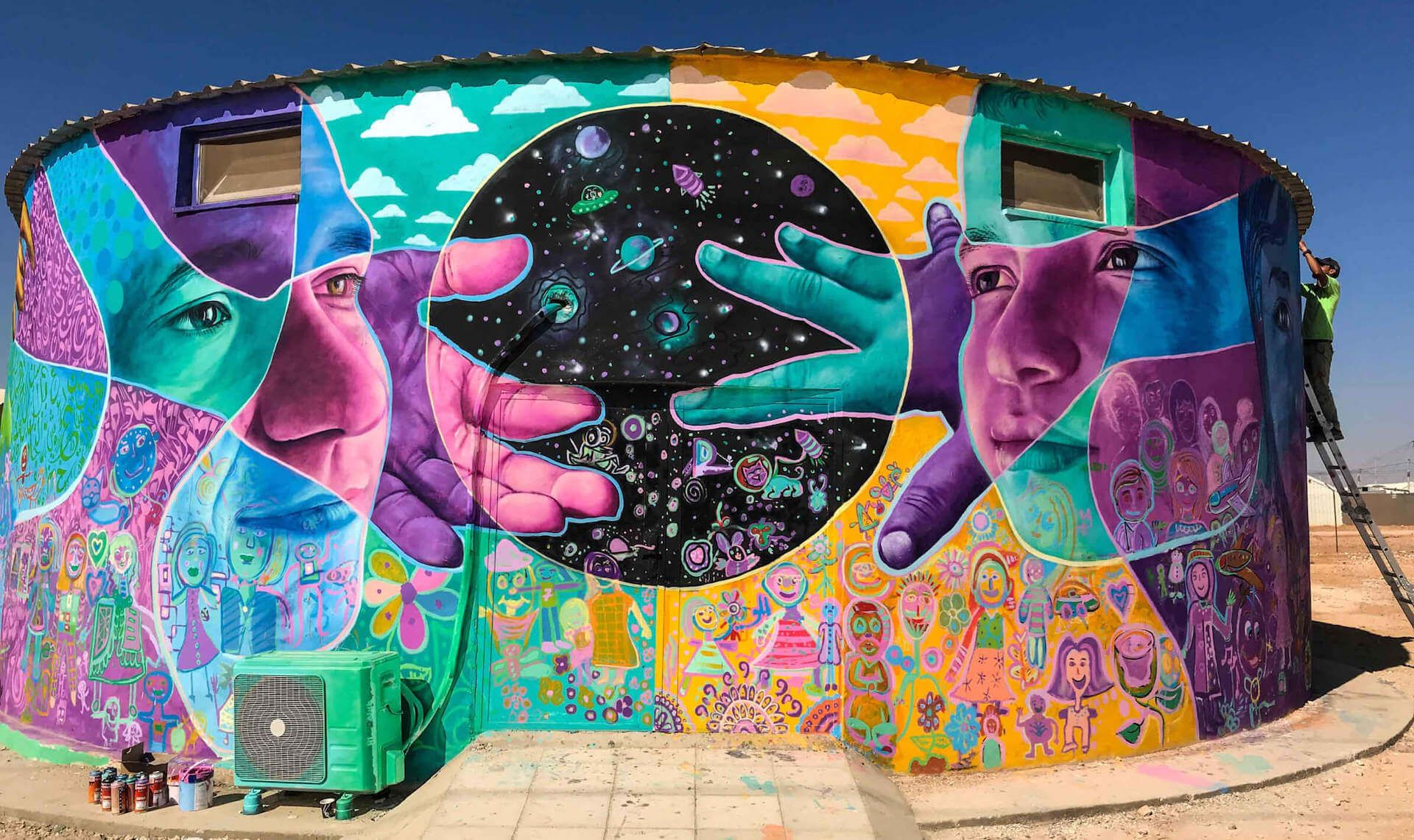
Azraq Syrian Refugee Camp, Jordan(2018): A father and son reach for one another across a generational divide, eager for familial love in times of great conflict for the Syrian people. Art courtesy of the artist.
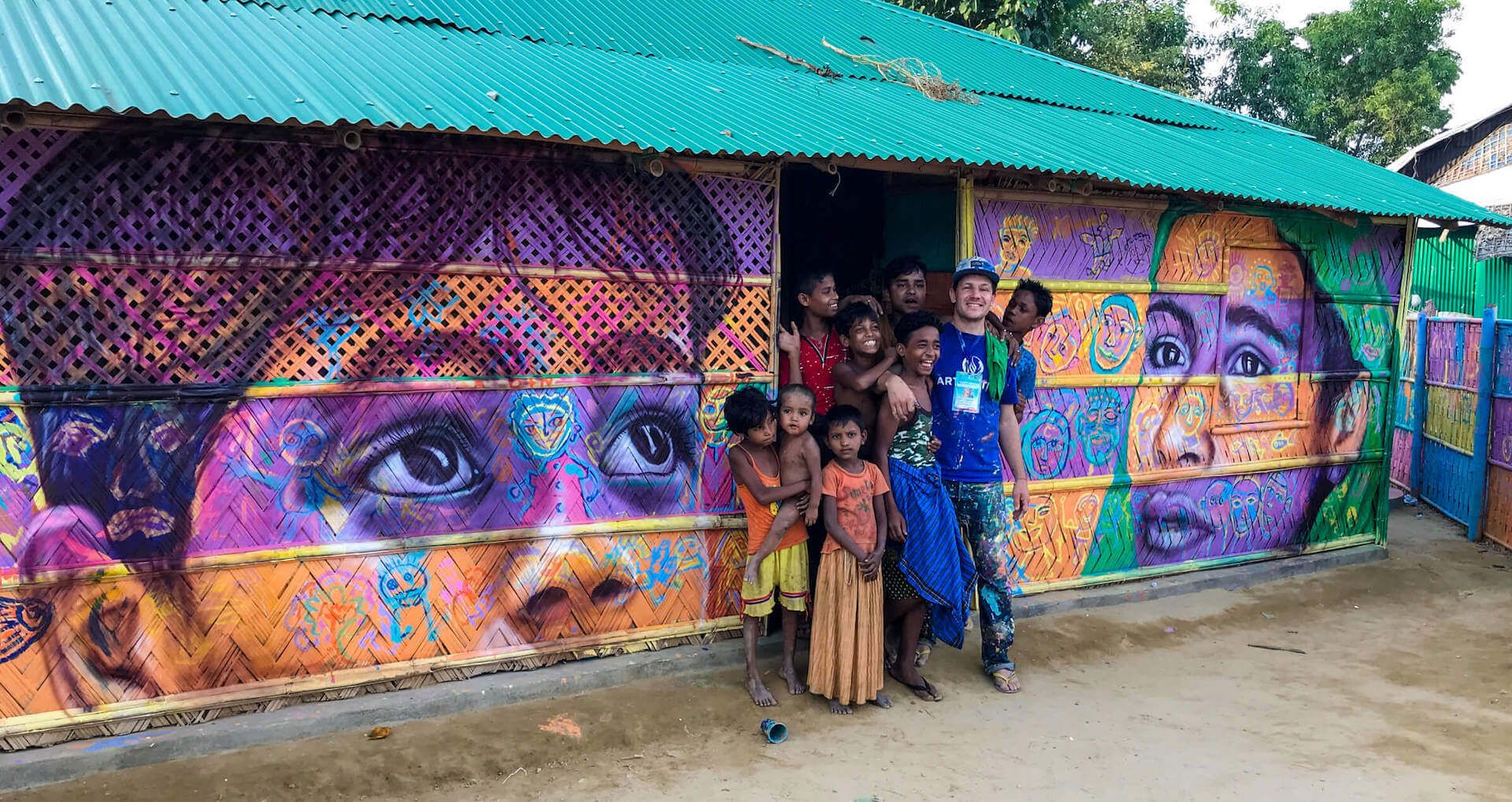
Azraq Syrian Refugee Camp, Jordan(2018): A father and son reach for one another across a generational divide, eager for familial love in times of great conflict for the Syrian people. Art courtesy of the artist.
